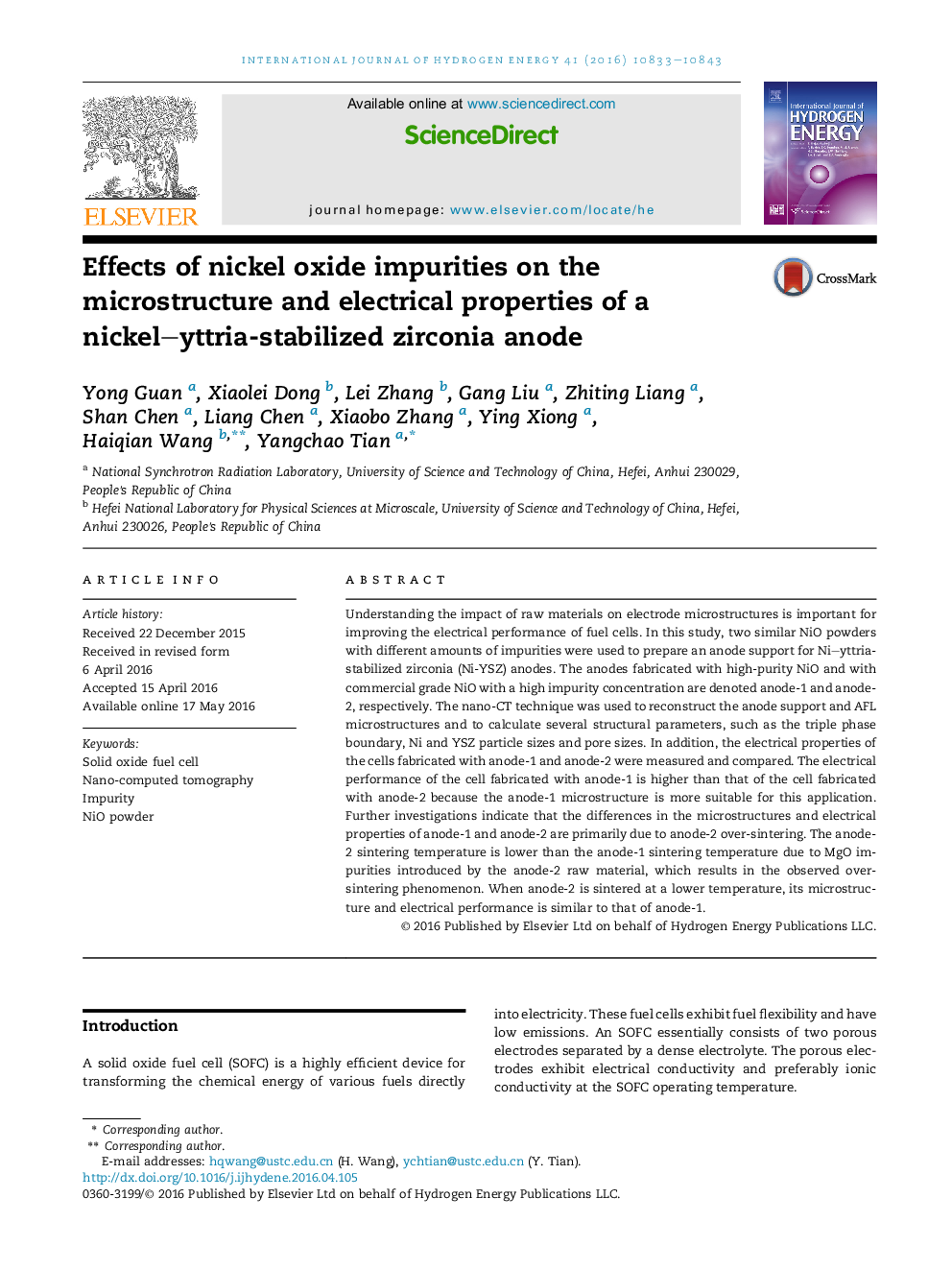| کد مقاله | کد نشریه | سال انتشار | مقاله انگلیسی | نسخه تمام متن |
|---|---|---|---|---|
| 1276809 | 1497400 | 2016 | 11 صفحه PDF | دانلود رایگان |
• Anodes with different NiO powders were imaged using nano-computed tomography.
• During co-fired, anode substrate had an influence on anode functional layer.
• 0.142 wt.% MgO in anode −2 may be the main reason to cause the over-sintering.
• The over-sintering can be avoided by lowering the sintering temperature by 50 °C.
Understanding the impact of raw materials on electrode microstructures is important for improving the electrical performance of fuel cells. In this study, two similar NiO powders with different amounts of impurities were used to prepare an anode support for Ni–yttria-stabilized zirconia (Ni-YSZ) anodes. The anodes fabricated with high-purity NiO and with commercial grade NiO with a high impurity concentration are denoted anode-1 and anode-2, respectively. The nano-CT technique was used to reconstruct the anode support and AFL microstructures and to calculate several structural parameters, such as the triple phase boundary, Ni and YSZ particle sizes and pore sizes. In addition, the electrical properties of the cells fabricated with anode-1 and anode-2 were measured and compared. The electrical performance of the cell fabricated with anode-1 is higher than that of the cell fabricated with anode-2 because the anode-1 microstructure is more suitable for this application. Further investigations indicate that the differences in the microstructures and electrical properties of anode-1 and anode-2 are primarily due to anode-2 over-sintering. The anode-2 sintering temperature is lower than the anode-1 sintering temperature due to MgO impurities introduced by the anode-2 raw material, which results in the observed over-sintering phenomenon. When anode-2 is sintered at a lower temperature, its microstructure and electrical performance is similar to that of anode-1.
Journal: International Journal of Hydrogen Energy - Volume 41, Issue 25, 6 July 2016, Pages 10833–10843
